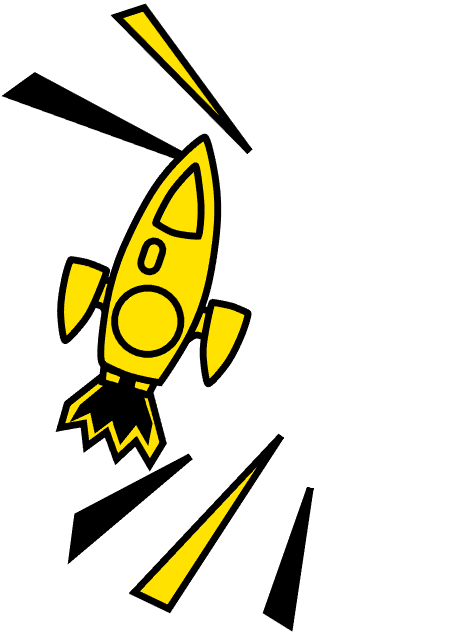
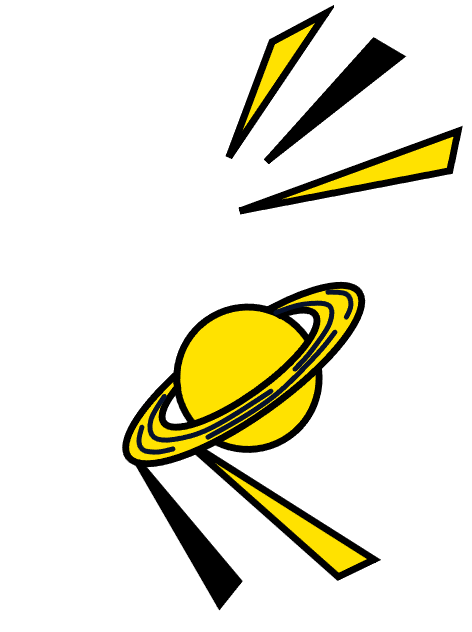
A Primeron Blobbish
For Earthlings
Blobbish is the language used by the podomorphs - a race of amoeboid aliens - to communicate with one another.
About the Podomorphs (Lore)
A podomorph in its resting state looks like a disc. They interact with their world by extending up to six pseudopods radially outwards from their central disc. These pseudopods are quite flexible, and can form complicated shapes and symbols.
The podomorph central disc has a thin shell on its “top” and “bottom” faces, but the sides of the disc are open and allow pseudopods to move freely around the circumference of the central disc.
Podomorphs sense the world around them with the aid of powerful electroreceptive organs. They can also pass current through individual pseudopods, which they can use to hunt prey and to add nuance to their communication.
The podomorph homeworld is filled with an ocean of fluid. Usually, podomorphs will move with the normal of their central disc perpendicular to the plane in which they are trying to move. However, when communicating with one another, they will align themselves such that their central disks are “facing” one another.
Like us, the podomorphs have multiple different languages. What we call Blobbish is a lingua franca that many podomorphs use. The numerical system used in Blobbish is actually incorporated from a different language, and as such the glyphs for numbers look somewhat different than the symbols used in non-numerical communication.
Because the podomorphs have an instinctive understanding of electricity and electrical currents, they incorporated electricity into their tools and technology far earlier than humans did.
Blobbish
Blobbish is a signed language. The relevant features in any given sign are:
- The glyph that each of the up to six pseudopods makes
- Which of the three sectors of the central disc the pseudopod emerges from
- The relative proximity of the pseudopods
- How each pseudopod moves (if at all)
- Which pseudopods have strong electrical current running through them
Because each pseudopod is quite dexterous, a single sign can often convey an entire sentence.
In order to communicate over long distances, podomorphs use projected capacitance to capture the signs that they are making and propagate them to a pixelated “display” on the receiving end. While their display has no need for a fluorescent screen or LEDs in each pixel (because they can sense the electrical currents directly), this is fortuitous because it means that podomorph communication technology can easily be adapted to work with existing human monitors and screens.
When the captain began interacting with the podomorphs, he developed a handwritten script to transcribe blobbish.
- The central disc and its three sectors are represented by a circle with three equally spaced radii
- The glyphs formed by each pseudopod and their positions are drawn as they are
- The motion of any given pseudopod is represented by small arrows next to that pseudopod
- A pseudopod is drawn in bold if there is strong electrical current passing through it
Matt and Emma initially discover the language through the captain’s transcriptions. Later, upon unlocking the podomorph communication device and unscrambling the a message they receive, they realize that the language is actually a sign language, translate the message, and respond with a message of their own by using their arms and legs as pseudopods.
Blobbish grammar
Sentence structure
The three sectors, starting at 12 o’clock and proceeding counterclockwise, describe the subject, verb, and object, respectively. Indirect objects are represented in the verb sector of the sign.
Throughout this guide, we will frequently represent glyphs (the symbols formed by individual pseudopods) on their own, without the corresponding central disc.
Plurals
One concept from the numerical system also appears in the rest of the language. The symbol 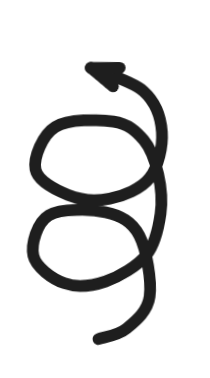 above any glyph indicates multiple indistinguishable objects. For objects which are distinguishable, the glyph will be repeated up to three times. More than three distinguishable instances of an object will still be represented by three copies of the glyph.
above any glyph indicates multiple indistinguishable objects. For objects which are distinguishable, the glyph will be repeated up to three times. More than three distinguishable instances of an object will still be represented by three copies of the glyph.
Persons
Like many human languages, Blobbish has three persons - first, second, and third, where third-person is also used for objects. Plural persons are described by combining single persons. If there are at least three people, or the people are indistinct (e.g. “them” in the abstract, not referring to any specific set of people), then the plural indicator can be added.
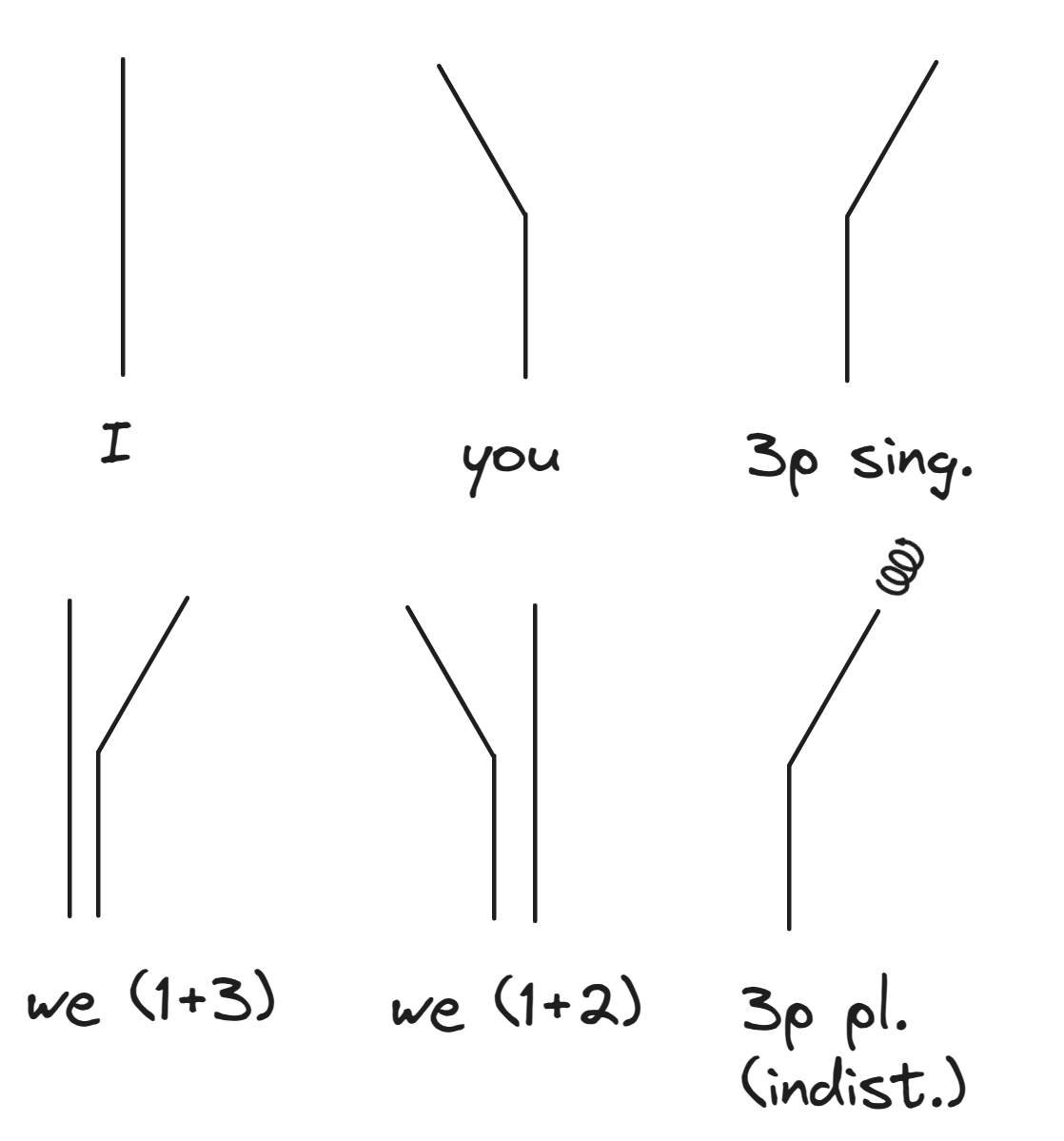
Order and Bolding
Within a given sector (with the exception of numerals), order does not matter. What does matter is the proximity of glyphs to one another. The exact meaning of a combination of adjacent glyphs is somewhat context dependent, ranging from modification to possession. However, in cases of ambiguity, the glyph indicating the overall type of the object will be bolded. For example, to say “my stone”, the glyphs for “me/I” and “stone” would be adjacent, and stone would be bolded for clarity. If a sentence has an indirect object, it will be placed in the verb sector and the verb glyph will be bolded.
Tenses and Moods
The tense of a verb is determined by its position within the verb sector. Going counterclockwise, the same glyph indicates past, present, and future, in that order.
There are three moods other than the indicative:
- a “subjunctive” mood (expressing the hypothetical capacity to do something), represented by a clockwise arrow
- an imperative mood (expressing commands or directives), represented by an outwards arrow
- a continuous mood (expressing an action that is ongoing), represented by a counterclockwise arrow
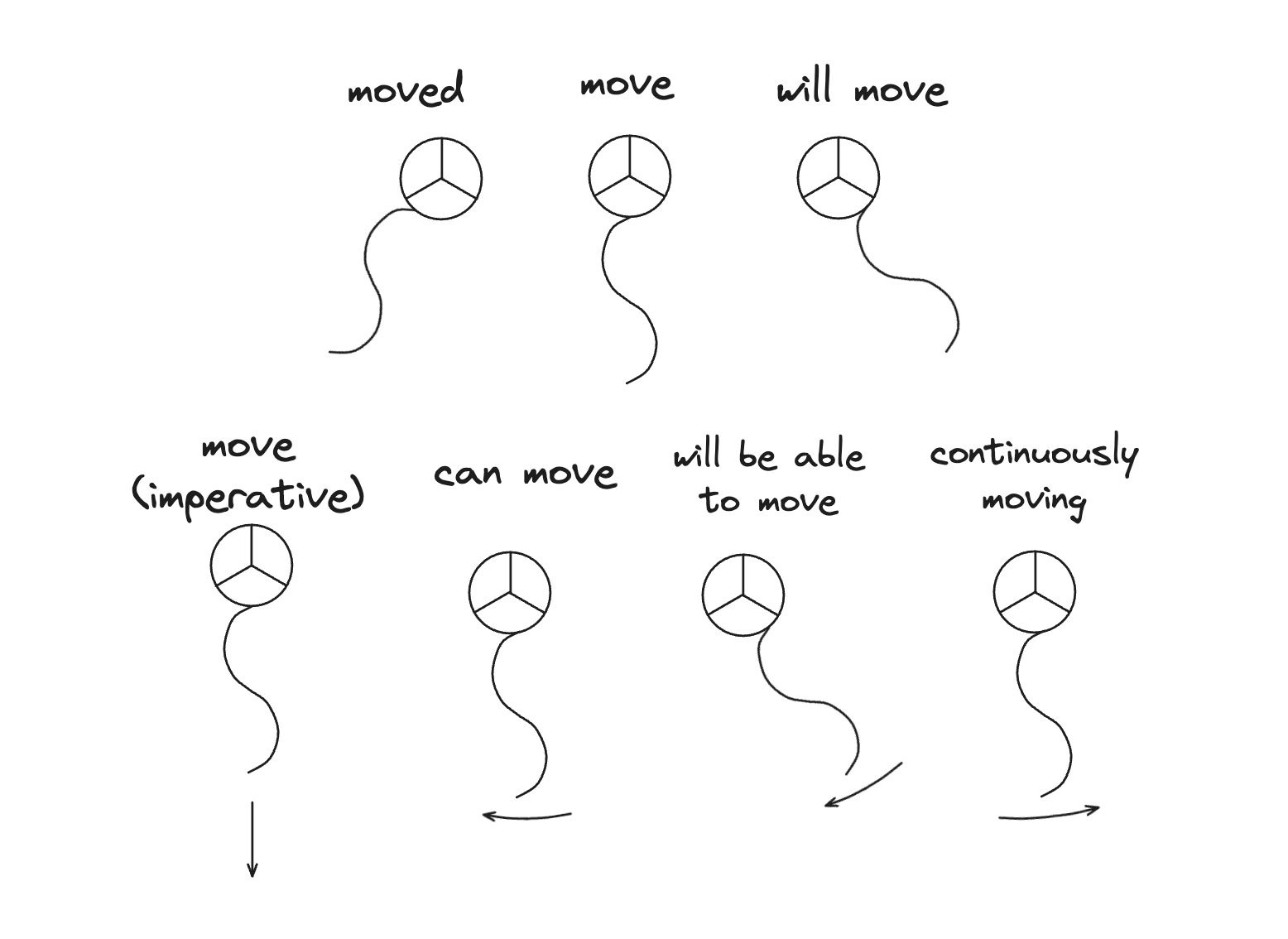
Interrogation
The two-headed arrow represents interrogation. The glyph that the two-headed arrow is over represents the “type” of the answer that is expected.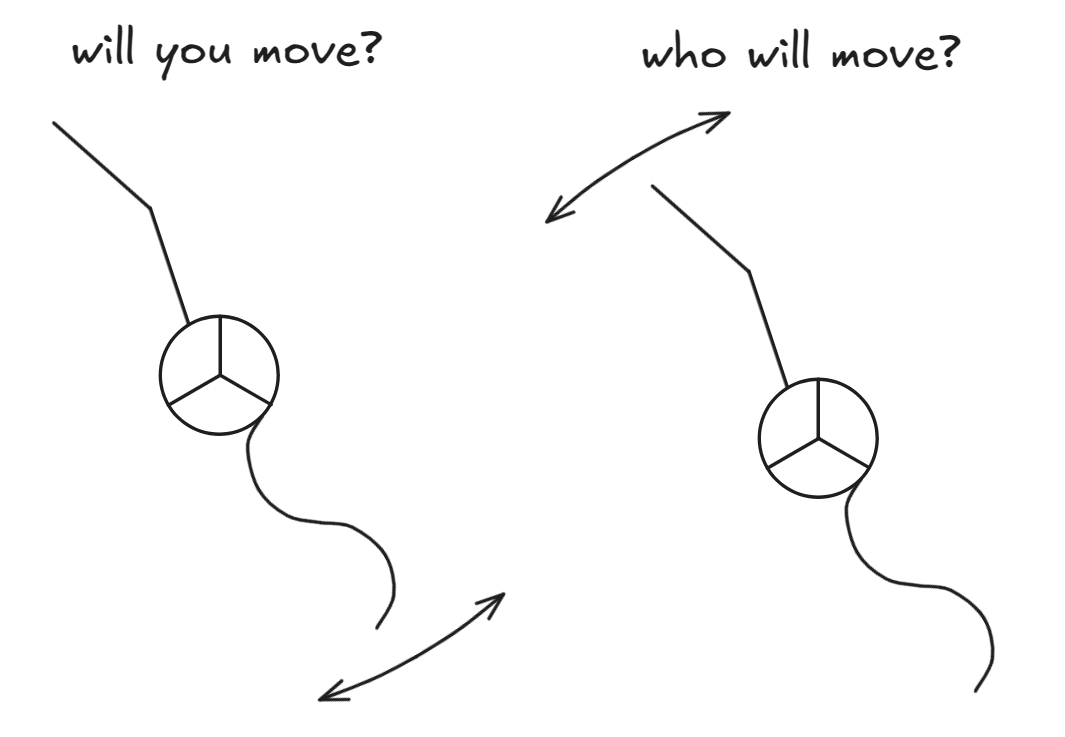
Negation
The sign for “not” looks just like the “not” sign in logic. This is, of course, a false friend.
Clause embedding
Because any given sign can have at most six glyphs - podomorphs have only six pseudopods - there is a special glyph,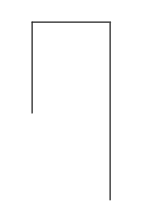 , which indicates that the content of the next sign should be “inserted” at the location of this glyph. In the following example, the two signs together read "I knew you were trouble". The second sign is the clause "you were trouble", and the clause embedding glyph inserts it as the object of the first sign, which is "I knew [embedded clause".
, which indicates that the content of the next sign should be “inserted” at the location of this glyph. In the following example, the two signs together read "I knew you were trouble". The second sign is the clause "you were trouble", and the clause embedding glyph inserts it as the object of the first sign, which is "I knew [embedded clause".
Dots
The dots at the end of some glyphs do not have any specific meaning. Glyphs which differ only by a dot are typically related, but not in any concrete way.
Glyphs appearing in multiple sectors
A glyph representing a given verb will represent a related noun if it is moved to one of the other sectors. For example, the glyph for “move”, in the subject or object sector, means “movement”.
Measurement
The glyph  is as used as an adjective. If it’s small, it means “smallest”, and if it’s large, it means “largest”.
is as used as an adjective. If it’s small, it means “smallest”, and if it’s large, it means “largest”. 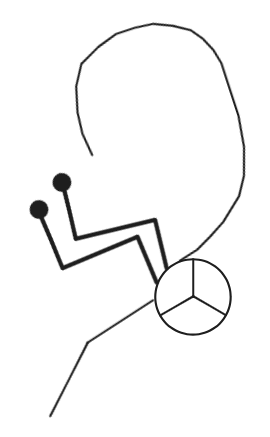
Blobbish numerals
Blobbish numerals use a base six system, and should be read counterclockwise from twelve o’clock. There are two glyphs (stems shortened so they’d fit inline):  and
and 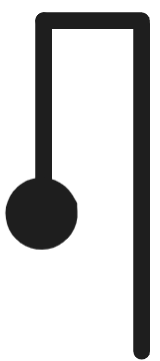 . Each digit in a base six number is represented by either
. Each digit in a base six number is represented by either 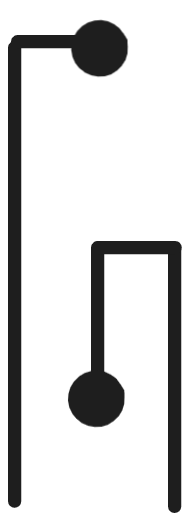 ,
,  , or
, or 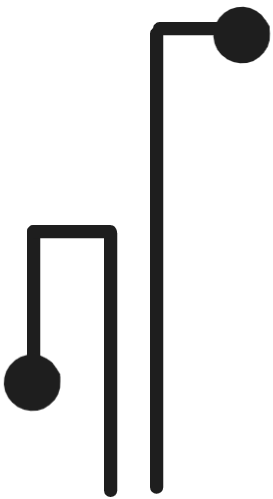 , and each glyph has a looped arrow above it. The number of loops above
, and each glyph has a looped arrow above it. The number of loops above  indicates the place being described: one loop for the units place, two for the sixes place, and so on. On its own (without a
indicates the place being described: one loop for the units place, two for the sixes place, and so on. On its own (without a  ), it represents the digit 3. If present at a given,
), it represents the digit 3. If present at a given,  with n loops changes the digit from 3 to 3+n or 3-n depending on whether
with n loops changes the digit from 3 to 3+n or 3-n depending on whether  is before (clockwise) or after (counterclockwise) the corresponding
is before (clockwise) or after (counterclockwise) the corresponding  . You can think of this as a “Roman numeral” system in each digit.
. You can think of this as a “Roman numeral” system in each digit.
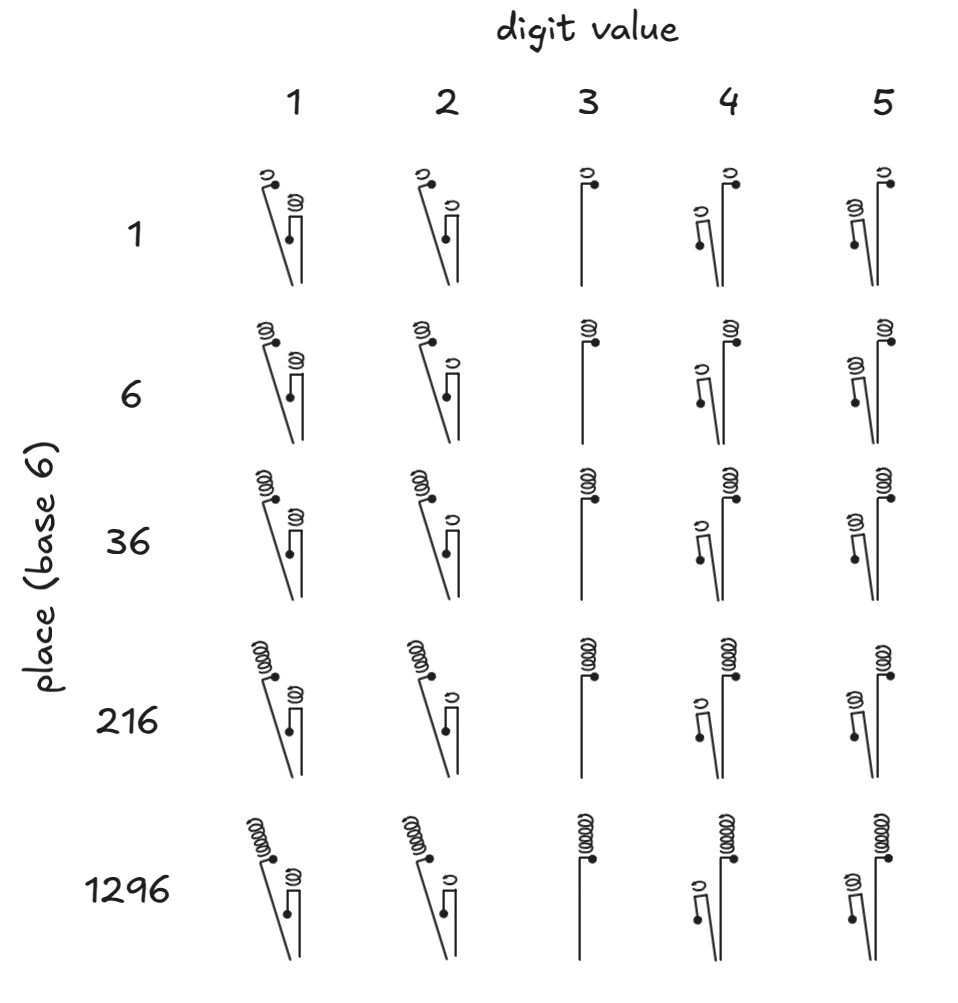
Note that the order of the digits does not matter, because each digit encodes its place in the number of loops above the  . In the hunt though, digits are always ordered counterclockwise starting with the units place.
. In the hunt though, digits are always ordered counterclockwise starting with the units place.
Vocabulary
Here is a list of the vocabulary words used in this round.
Verbs
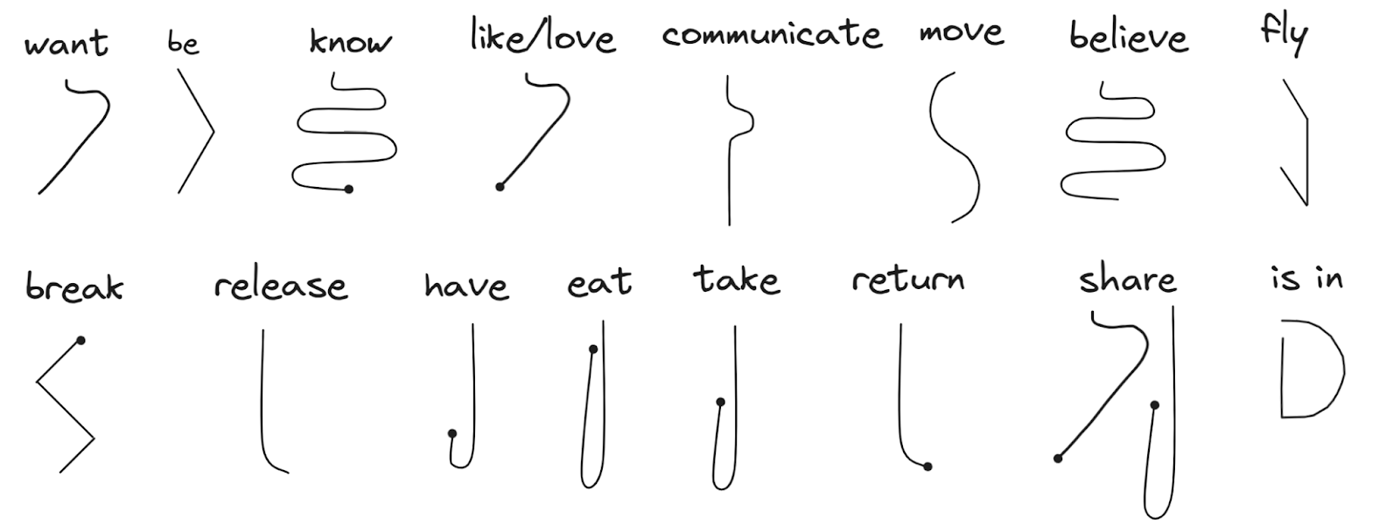
Nouns
